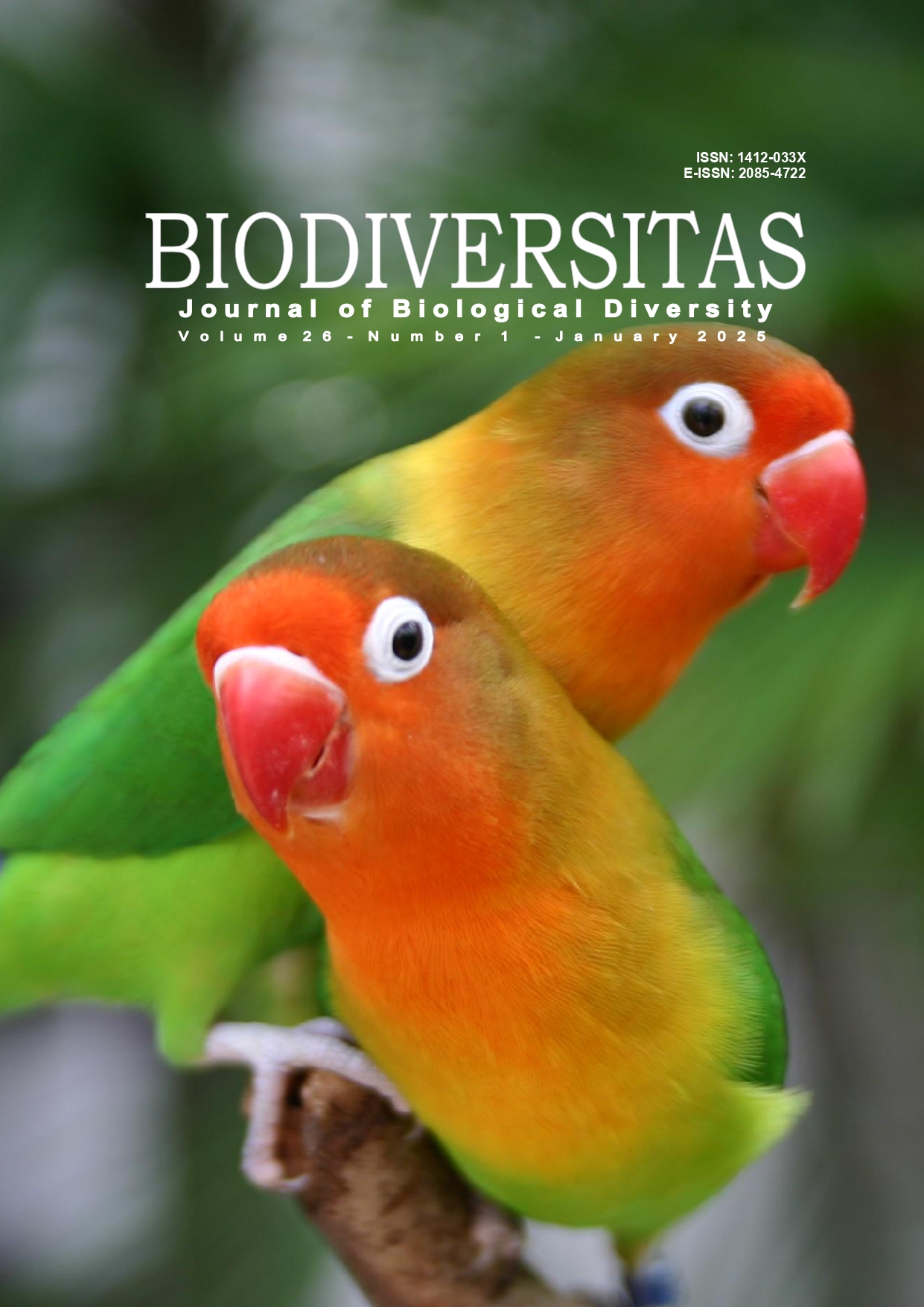Isolation and potential evaluation of organophosphate-indigenous degrading fungi from Singolangu Farmland, Magetan, Indonesia
##plugins.themes.bootstrap3.article.main##
Abstract
Abstract. Pujiati, Hertanti, Kiswardianta RB, Fatimah, Ramadhan R, Ni’matuzahroh. 2025. Isolation and potential evaluation of organophosphate-indigenous degrading fungi from Singolangu Farmland, Magetan, Indonesia. Biodiversitas 26: 157-168. Pesticide use is prevalent in Indonesian agriculture, especially in vegetable farming regions like Singolangu Hamlet, Sarangan Village, Plaosan, Magetan, East Java. While pesticides effectively control pests, their overuse and misuse have caused soil contamination, health disruptions, and decreased agricultural productivity. This study examines the potential of indigenous fungi from Singolangu to remediate soil polluted by organophosphate pesticides, specifically chlorpyrifos and profenofos. Twelve indigenous mold isolates were isolated and ex-situ bioaugmentation was performed with six treatments. The levels of N, P, K, pH, and organophosphate pesticide residues were analyzed. Aspergillus flavus was the most effective in bioremediation, achieving significant results within four weeks and displaying N, P, K, pH values of 101 ppm, 99 ppm, 306 ppm, and 6, respectively. The KPSK Formula (a mixture of all Fungi KPS1 to KPS12 ) which utilized a 12-isolate consortium, also showed significant results, with N, P, K, and pH values of 57 ppm, 59 ppm, 138 ppm, and 6, respectively. The control soil had 150 ppm of chlorpyrifos and 29 ppm of profenofos left over from the pesticides, but the bioremediation treatment KPS3 lowered these levels to 97 ppm of chlorpyrifos and 5.5 ppm of profenofos. This study indicates that indigenous fungi can efficiently degrade profenofos and chlorpyrifos pesticides, either individually or in consortium.


 https://orcid.org/0000-0002-5839-1214
https://orcid.org/0000-0002-5839-1214